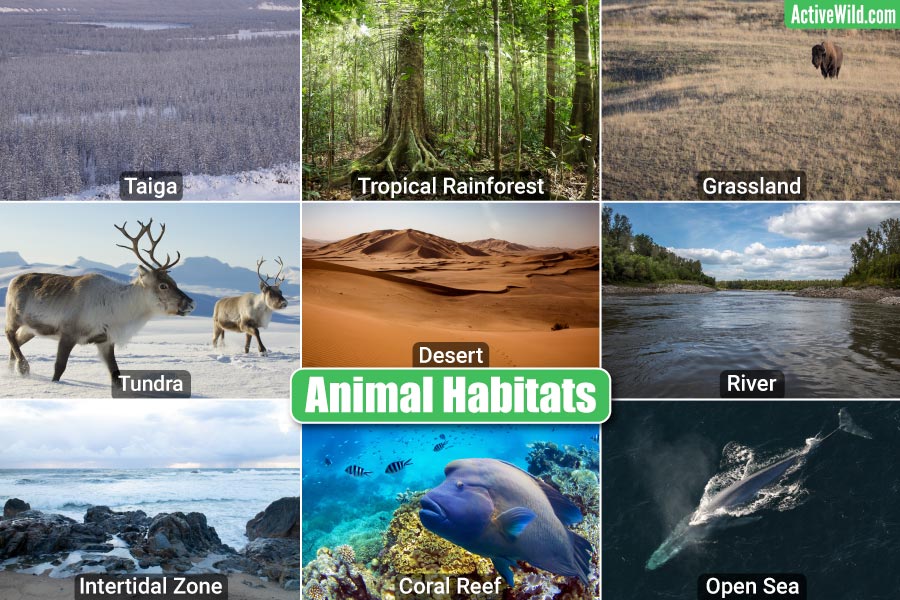Animal habitats can be divided into three main types: terrestrial (land) habitats and two aquatic habitats: freshwater, and marine (saltwater).
Examples of terrestrial animal habitats include forests, grasslands and deserts; examples of freshwater animal habitats include lakes, rivers and marshes; examples of marine animal habitats include coral reefs, the open ocean and the intertidal zone.
On this page, we explore the different types of animal habitats and provide examples of species that live in each.
Page Index
Animal Habitats
- Forest Habitats
- Boreal Forest / Taiga
- Tropical Rainforest
- Temperate Forest
- Grassland Habitat
- Savanna Habitat
- Tundra Habitat
- Desert Habitat
- Montane Habitat
- Caves
- Urban
- Freshwater Habitats
- Freshwater Wetlands
- Rivers
- Lakes & Ponds
- Marine / Saltwater Habitats
- The Coast
- The Intertidal Zone
- Estuaries
- Mangrove Forest
- Seagrass Meadow
- Kelp Forest
- Coral Reef
- The Open Sea
- Hydrothermal Vents
What Is An Animal Habitat?
An animal habitat is the combination of physical factors that affect animal life in a particular area. These factors can include: climate, amount of available sunlight, geological characteristics (the type of rocks and soil available), the amount and type of plant life present, and the presence and amount of either salt or fresh water.
Any place in which an animal can live can be considered an animal habitat. These range from a forest to inside another animal!
On this page we cover all of Earth’s major terrestrial and aquatic animal habitats.
Terrestrial Animal Habitats
A terrestrial habitat is one that occurs on land, rather than in water. The first animals appeared in the sea at least 600 million years ago; the first land animals likely appeared during the Ordovician Period, around 150 million years later.
Forest Habitats

A forest is an area in which the primary vegetation is trees. Forests cover around 31% of Earth’s total landmass, and are home to more animal species than any other terrestrial habitat.
Forests are home to many different animals, many of which are arboreal (tree-dwelling).
Animals that live in forest habitats include bears, monkeys, gorillas, wild cats such as tigers and ocelots, deer, woodpeckers, owls, tree frogs and many types of snakes.
- You can see more animals that live in forests on this page: Forest Animals
- You can find out more about forest habitats on this page: The Forest Biome
- You can see a list of arboreal animals on this page: Arboreal Animals
Boreal Forest / Taiga
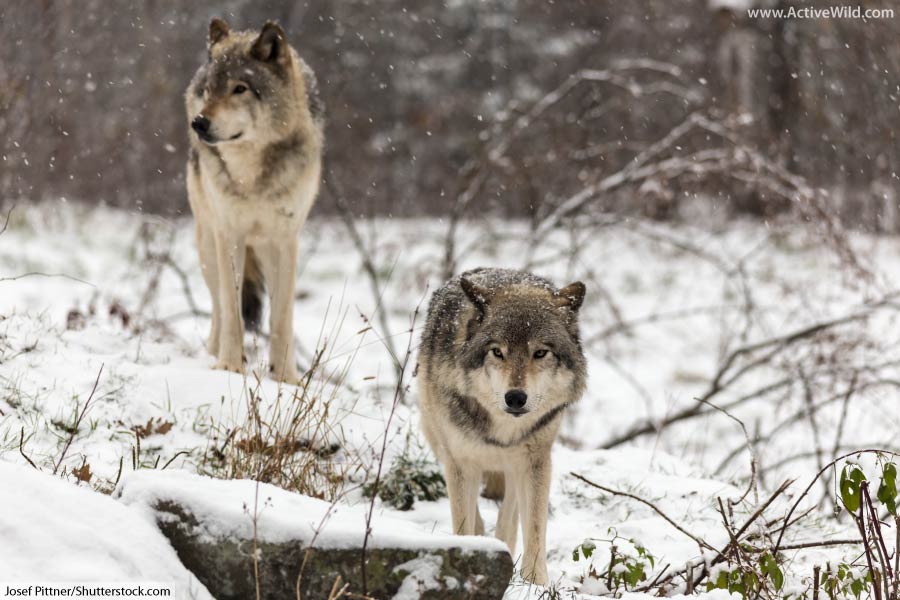
Boreal forests, which are also known as taiga, are located in the northern hemisphere south of the Arctic tundra and north of the northern temperate forests.
Boreal forests cover around 11.5% of the Earth’s entire land area–roughly 17 million sq. km / 6.6 million sq. miles. They are dominated by conifers (cone-producing plants such as spruces, larches and pines), and are covered by snow for much of the year.
Animals that live in boreal forests include: American black bear, brown bear, wolf, North American and Eurasian beavers, reindeer / caribou, great gray owl, Canada and Eurasian lynxes, snowshoe hare and raven.
- You can see more animals that live in boreal forests on this page: Taiga Animals
- You can find out more about the taiga habitat on this page: Taiga Biome
Tropical Rainforest
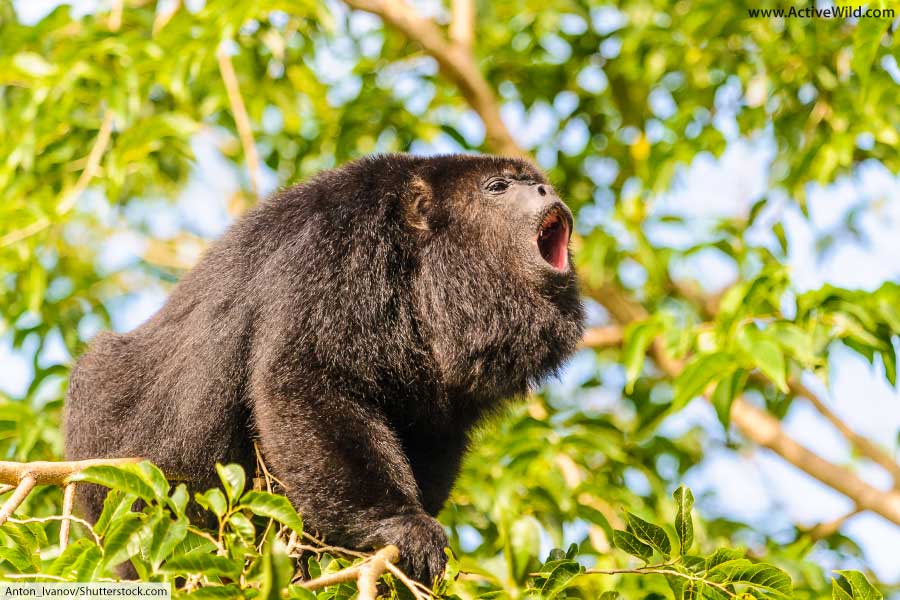
Tropical rainforests are forests that grow around the equator, between the Tropics of Cancer and Capricorn. Despite covering only around 6% of the Earth’s surface, rainforests are home to 80% of all known species.
Due to their location, tropical rainforests are hot all year round, and experience a high amount of rainfall. There is little seasonal difference in a rainforest, and plants can grow continuously throughout the year.
Due to this combination of factors, tropical rainforests are by far the most biodiverse of all land habitats.
Animals that live in tropical rainforest habitats around the world include: red-eyed tree frog, harpy eagle, macaws, toucans, electric eel, blue morpho butterflies, Hercules beetle, umbrellabird, green anaconda, gaboon viper, orangutan, sloth, gorilla, spider monkeys and howler monkeys.
- You can see more animals that live in rainforests on this page: Rainforest Animals
- You can find out more about rainforests on this page: Rainforest Facts - The Ultimate Guide To Rainforests
Temperate Forest
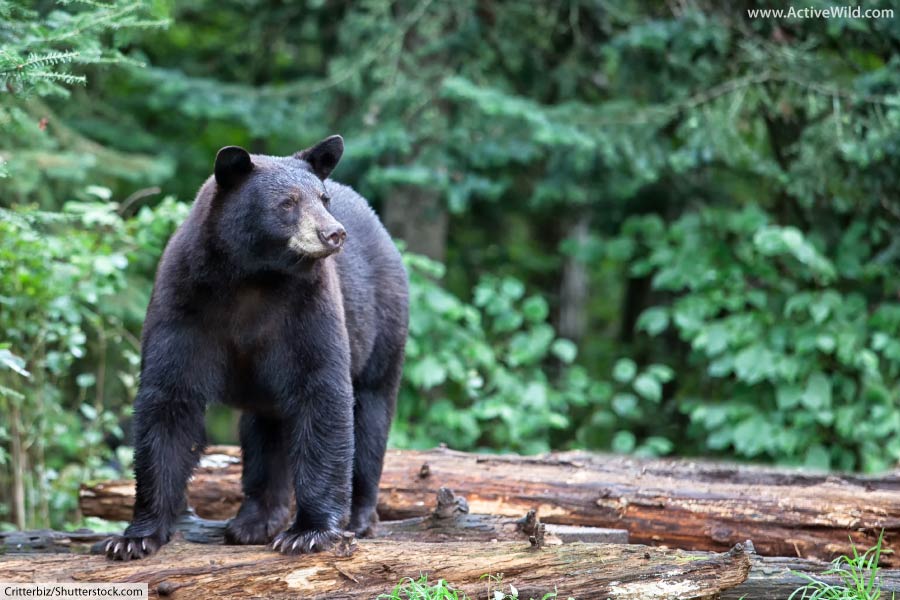
Temperate forests are forests that grow in the world’s temperate zones, which are located between Earth’s tropical and polar regions.
Although lacking the biodiversity of tropical rainforests, temperate forests are nevertheless important animal habitats, offering shelter and food for many species.
Animals that live in temperate forests around the world include: chipmunks, voles, raccoon, flying squirrels, bears, bald eagle, goshawk, sparrowhawk, fire salamander, Tasmanian devil and platypus.
- You can find out more about temperate forests on this page: Temperate Forest Facts
Grassland Habitat

Whereas forest habitats are dominated by trees, grassland habitats are dominated by grasses. Grasses are flowering plants in the family Poaceae. Most reproduce with wind pollination, but some rely on insects.
Depending on how they are defined, grasslands cover between 31% and 69% of land on Earth.
Grasslands are open, exposed places in which trees are either sparse or completely absent. Many grasslands have low rainfall and cold winters, making them fairly inhospitable regions with relatively low biodiversity.
Grasslands are typically inhabited by grazing animals, whose presence helps keep tree growth to a minimum.
The Pampas of South America, prairie of North America, and Steppe of Asia are all examples of grasslands.
Animals that live in grassland habitats include: aardvark, aardwolf, kangaroos and wallabies, Pallas’s cat, saiga antelope, American badger, American bison, coyote, prairie dogs, giant anteater, maned wolf and rhea.
- You can see more examples of grassland animals on this page: Grassland Animals
- You can find out more about the grassland habitat on this page: Grassland Facts
Savanna Habitat
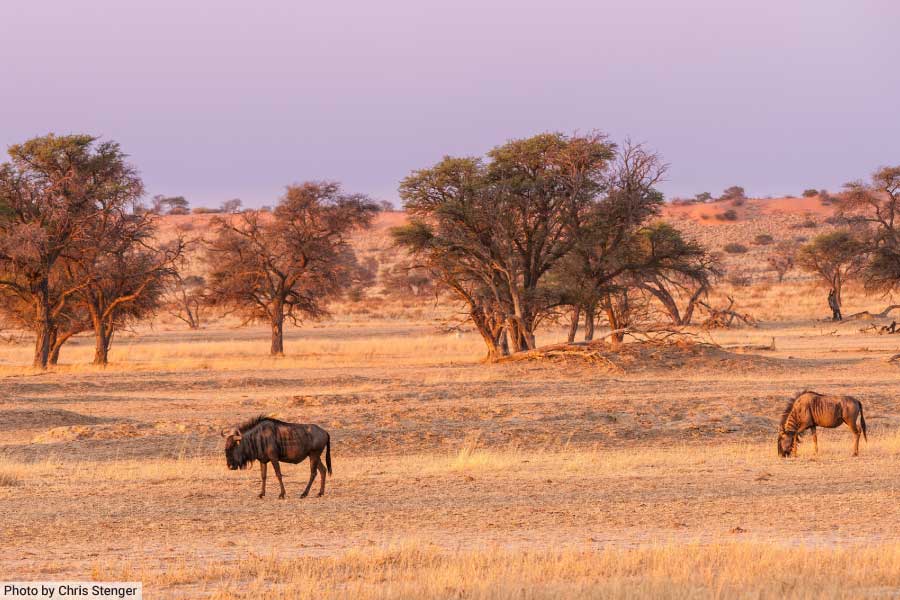
Savanna (spelled "savannah" in British English) is a habitat part-way between a forest and grassland. Unlike a grassland, a savanna has trees, although they are spaced far enough apart to allow grass to grow on the ground between them. (A savanna lacks the continuous canopy layer that prevents sunlight from reaching the forest floor.)
The world’s most famous savanna habitat is found in sub-Saharan Africa, which is home to iconic animals such as wildebeest, African buffalo, zebras, African bush elephant, hippopotamus, giraffe, lion, cheetah, hyenas and African wild dog.
Tundra Habitat

Tundra is a habitat found in polar regions in which the soil is permanently frozen. During the long winters of the tundra, daylight hours are either short or non-existent.
Only exceptionally hardy plants can grow in the tundra, and the few animals that call the tundra their home have evolved numerous adaptations for living in this inhospitable habitat.
Tundra is found in both the Arctic and Antarctica. In addition, a form of tundra known as Alpine tundra is found above the tree line in mountainous regions.
Animals that live in the tundra habitat include: Arctic fox, Arctic hare, muskox, caribou / reindeer, Dall sheep, lemming, Arctic wolf, wolverine, voles, narwhal, beluga, skuas and several gull species.
- Discover more tundra animals on this page: Tundra Animals
- You can see more Arctic animals on this page: Arctic Animals
- You can see more animals that live on Antarctica on this page: Antarctic Animals
- You can find out more about the Arctic on this page: Arctic Facts
- You can find out more about Antarctica on this page: Antarctica Facts
Desert Habitat
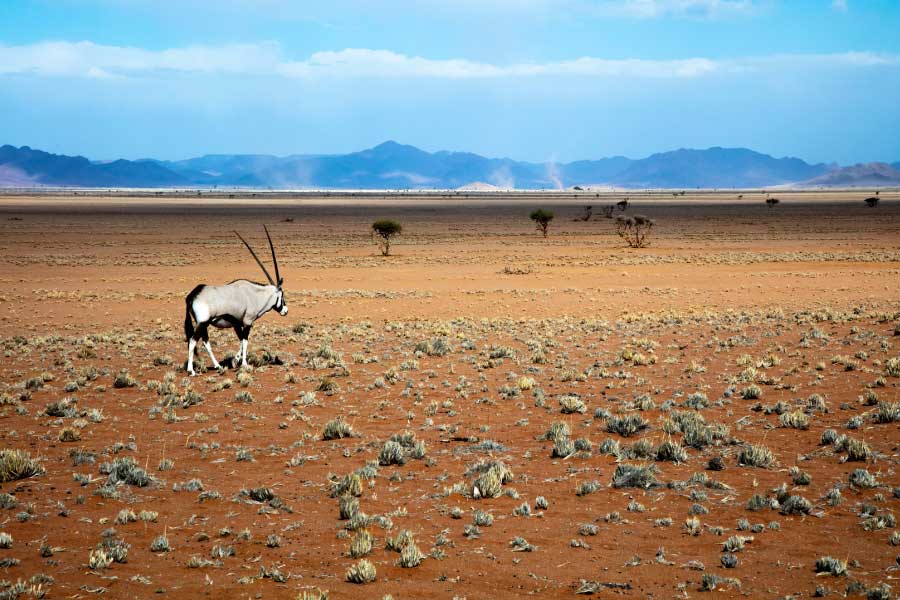
A desert is an area with very little rainfall. As a result, the desert habitat is one of the least biodiverse habitats. Deserts are characterized by extreme temperatures, and can either be “hot” deserts or “cold” deserts.
Deserts such as Africa’s Sahara Desert and Kalahari Desert and Australia’s Great Australian Desert are “hot deserts”, whereas Asia’s Gobi Desert, South America’s Patagonian Desert and much of the continent of Antarctica are “cold deserts”.
Due to the lack of cloud cover, even hot deserts can experience extremely cold temperatures at night. The wide difference between day and night-time temperatures presents an additional challenge for the world’s desert animals.
Animals that live in desert habitats include: Arabian oryx, camel spiders, scorpions, camels, fennec fox, kit fox, Gila monster, meerkat, Mojave Desert tortoise, thorny devil, perentie and water-holding frog.
- You can see more animals that live in a desert habitat on this page: Desert Animals
- You can see more deserts on this page: Famous Deserts
- You can find out more about desert habitats on this page: Desert Facts
Montane Habitat
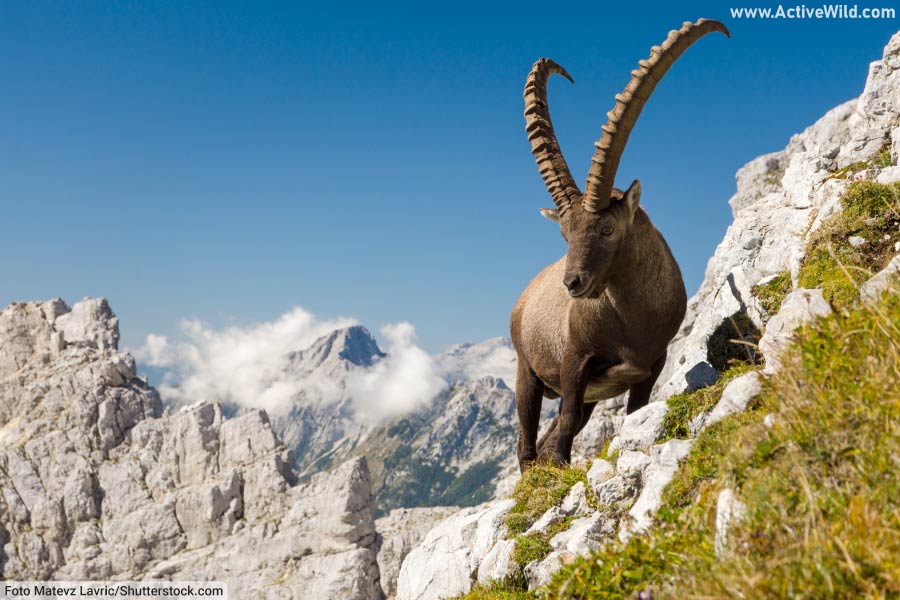
A mountain is a projection of land whose peak is over 1,000 ft / 300 m above sea level. Mountain ranges often form as a result of tectonic movement. Mountains are also created by volcanic activity.
A single mountain can have a number of different habitats, ranging from montane forests that grow foothills and valleys, to alpine tundra above the tree line.
Examples of animals that live in montane habitats include: Alpine marmot, Alpine ibex, Andean condor, Chamois, Golden eagle, Himalayan tahr, snow leopard, wild goat, mountain goat and mountain hare.
- You can see more animals that live in montane habitats on this page: Mountain Animals
Caves

Caves are natural holes in the ground. They are formed in a number of ways, including erosion by water and tectonic activity.
With no light, and a corresponding lack of plant life, caves are not places in which a large number of species are found.
Cave animals, known as troglobites, are often characterized by partial or complete blindness, lack of pigmentation (cave animals are often white or extremely pale), and enhanced non-visual sense organs such as extended antennae.
Examples of animals that live in caves include: the olm (also known as the cave salamander), Phantom cave snail, white cave velvet worm, Nelson cave spider, Madla cave spider, Aleys' cave millipede, Benton County cave crayfish, rosy woodlouse, cave cricket, and Troglocladius hajdi, a midge that is able to fly despite being blind.
Animals that shelter in caves but which spend a significant amount of time outside, such as bats, bears, hyenas and the oilbird, are not considered troglobites.
Urban Habitats
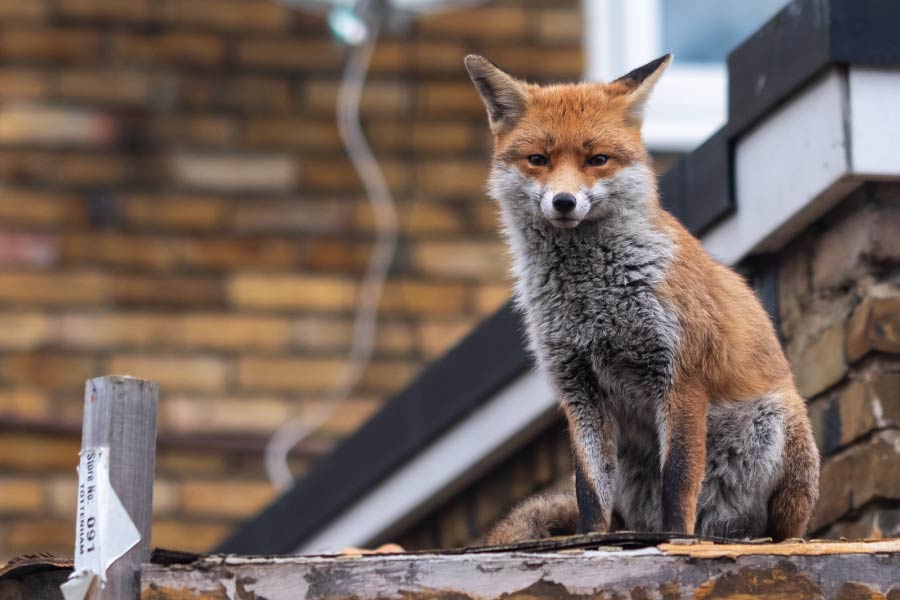
Urban habitats are those found in towns and cities such as buildings, parks and gardens. Although dominated by humans, urban areas are home to a surprising amount of wildlife, and are particularly suited to adaptable, generalist species.
Examples of animals found in urban habitats include: red fox, coyote, raccoon, gulls, rats, mice, feral pigeon and peregrine falcon.
Aquatic Habitats
The world’s aquatic habitats can be divided into two main groups: marine / saltwater habitats, and freshwater habitats. Below are examples of aquatic habitats in both main groups.
Freshwater Animal Habitats
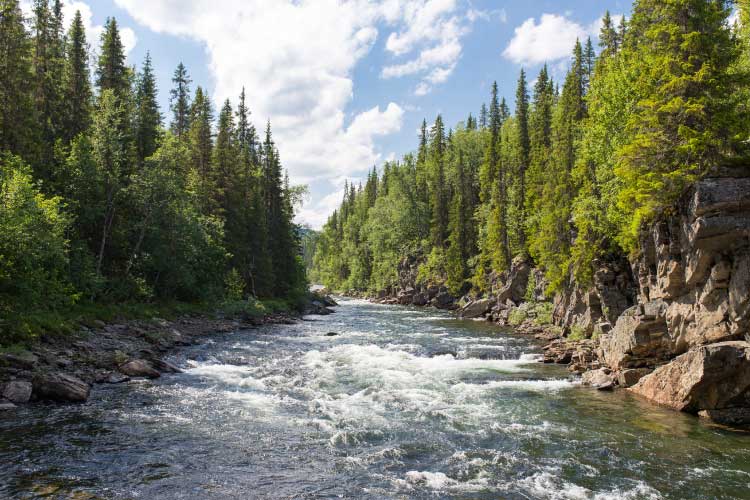
Less than 3% of Earth’s water is freshwater, and much of that is frozen in the form of polar ice caps and glaciers. The percentage of Earth’s water able to support a wide diversity of life is far smaller – in fact, just 0.014% of all Earth’s water is freshwater in the form of rivers, lakes and wetlands.
- You can see a list of freshwater animals on this page: Freshwater Animals
- You can find out more about freshwater habitats on this page: Freshwater Biome Facts
Freshwater Wetlands

Wetland habitats are areas in which the ground is either flooded or saturated by water. Freshwater wetlands include swamps and marshes. In a swamp, the dominant plant life is woody trees or shrubs. In a marsh, the dominant plant life is aquatic plants.
Wetlands are found on every continent and are home to a large variety of animal life.

Examples of wetland habitat animals from around the world include: caimans, crocodiles, alligators, marsh deer, otters, capybara, herons, egrets, cranes, ducks, mink and beavers.
Rivers

A river is a body of flowing water. Both a river itself, and the riparian zone – the land situated next to a river – provide a home to many animal species. Rivers are freshwater habitats, but where they meet the sea, rivers can become brackish. (Brackish water is a mix of saltwater and freshwater).
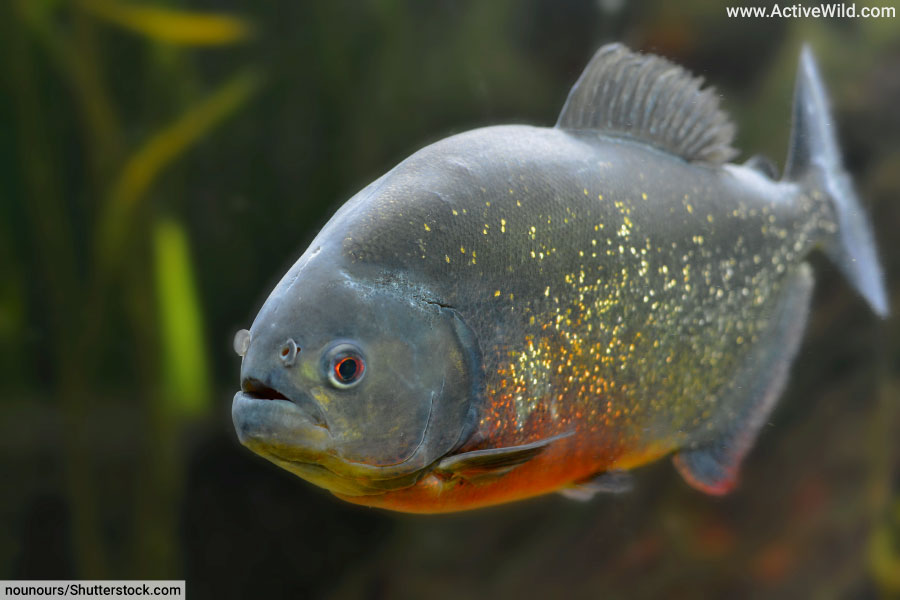
Examples of animals that live in or near rivers include: crocodiles, alligators, nutria / coypu, river dolphins, pike, perch, catfish, otters, the hellbender, the alligator snapping turtle, kingfishers, dragonflies and mayflies.
Rivers are also temporary homes to migratory fish such as salmon, steelhead, sea trout and freshwater eels, which migrate between freshwater and marine habitats.
Lakes & Ponds
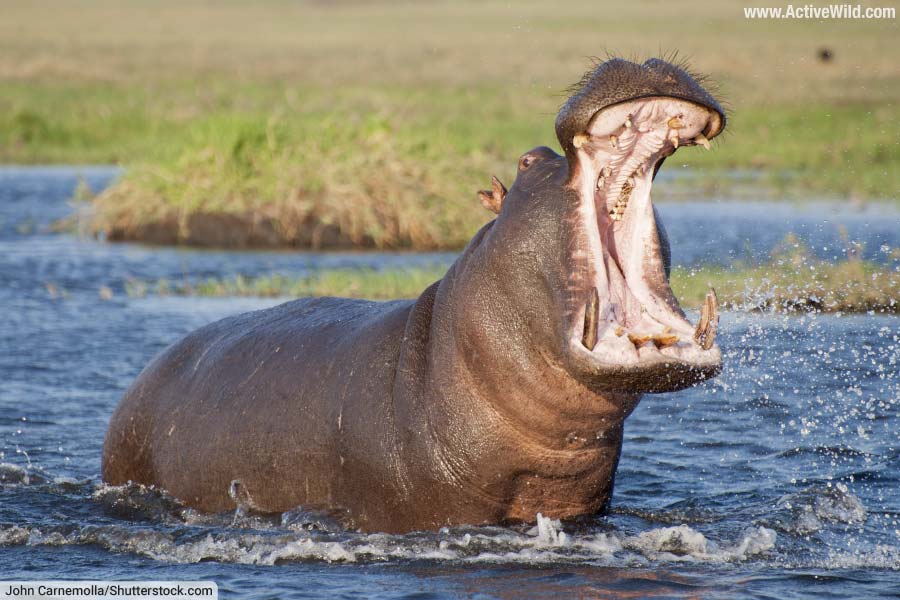
Lakes and ponds are bodies of still water. A lake is generally bigger and deeper than a pond. Lakes are formed in a number of different ways, including tectonic, glacial or volcanic activity.
Lakes can also be formed by rivers, with oxbow lakes, which are formed when a U-shaped section of river becomes isolated from the main river, being a common example.
Many animals that live in other freshwater habitats, such as wetlands and rivers, are also found in lakes and ponds.
Examples of animals found in lakes include the hippopotamus, common water snake, common mudpuppy, walleye, largemouth bass, smallmouth bass, carp, common snapping turtle, great diving beetle, water striders and water boatmen.
- You can see a list of lake animals on this page: Animals That Live In A Lake
Marine Animal Habitats
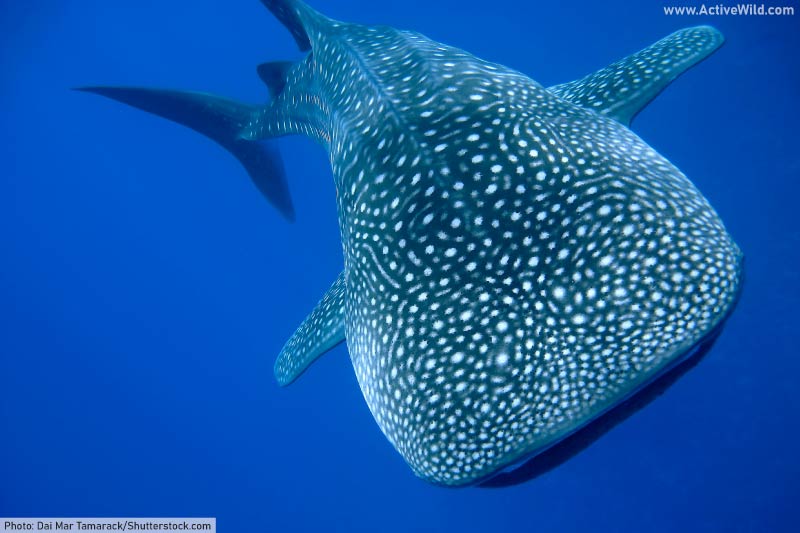
The world’s oceans and seas cover 71% of Earth’s surface and contain over 96% of the planet’s water. The first living things appeared in the ocean over 3.5 billion years ago, and the ancestors of all terrestrial animals were marine animals.
Marine habitats don’t just include the open ocean; they also include the world’s coasts, estuaries, reefs, and other saltwater ecosystems.
A vast number of animals live in the sea, including fish, crustaceans, mollusks, worms, and cnidarians (animals such as jellyfish, sea anemones and corals). The world’s oceans are also home to a relatively small number of mammals, including whales and dolphins, and reptiles, such as sea turtles and sea snakes.
- You can see a list of ocean animals on this page: Ocean Animals
- You can find out more about the ocean on this page: Marine Biome Facts
The Coast
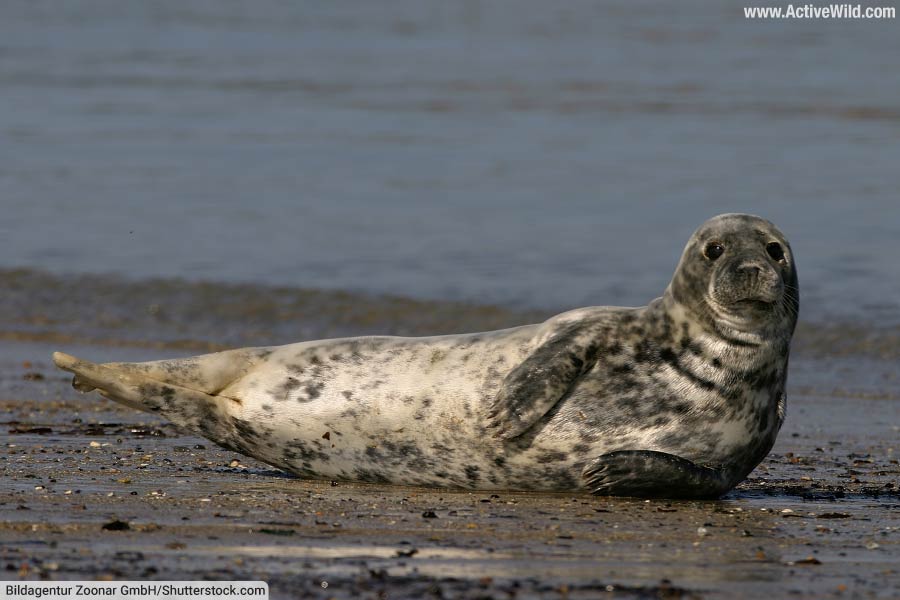
The coast is the region where the land meets the sea. The coastal habitat supports a wide range of animals, from worms that live in the sediment, to birds such as gulls and waders that have numerous adaptations for foraging in coastal environments. Pinnipeds (marine mammals such as seals, sea lions and the walrus) breed on coasts in many parts of the world.
The Intertidal Zone
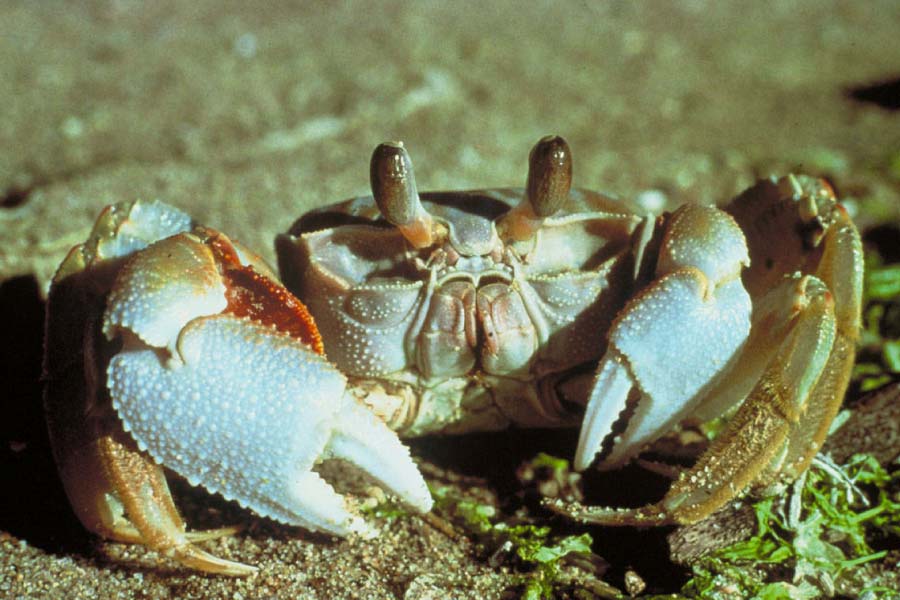
The intertidal zone is the area of the shore that is above the low-water mark and below the high-water mark. It is exposed at low tide and covered by water at high tide.
The retreating tide can leave areas of water known as rock pools or tide pools. These can be home to small fish and a variety of other marine animals.
Animals that live in the intertidal zone habitat include lugworms, ragworms, crabs, barnacles, sea stars / starfish, sea urchins, periwinkles, anemones, limpets, blennies, rock gobies and weeverfish.
Estuaries

An estuary is a body of water formed where a river meets the sea. The water in an estuary is often brackish (a mix of saltwater and freshwater). Estuaries are typically nutrient-rich and home to a correspondingly large number of animals.
Animals that live in estuaries include waterfowl (birds such as ducks and geese); wading birds such as sandpipers, plovers, oystercatchers and stilts; herons, egrets, mullets and porpoises.
Mangrove Forests

Mangrove forests are wetland areas within the intertidal zone whose vegetation is dominated by mangroves.
Mangroves are trees or woody shrubs that are able to live in brackish or salt water. Mangroves often have prop roots that hold the main plant above the water level.
Animals that live in mangrove forests include sponges, oysters; crustaceans such as shrimp, mud lobsters, barnacles, fiddler crabs, the mangrove crab and the blue soldier crab; birds such as the mangrove fantail, mangrove kingfisher, brown pelican and great egrets; and fish such as the mangrove jack, mangrove snapper, and mangrove whipray.
Seagrass Meadows

Shallow coastal areas whose vegetation is predominantly seagrasses are known as seagrass meadows or seagrass beds. Seagrasses are flowering plants able to grow in marine habitats, and the only plants that grow in the ocean. Their long, green leaves resemble grasses found on land.
Animals that live in seagrass meadows include mollusks, bristle worms, crustaceans such as shrimp and crabs; fish such as seahorses and flatfish, and larger animals such as the dugong, manatees and the green sea turtle.
Kelp Forests
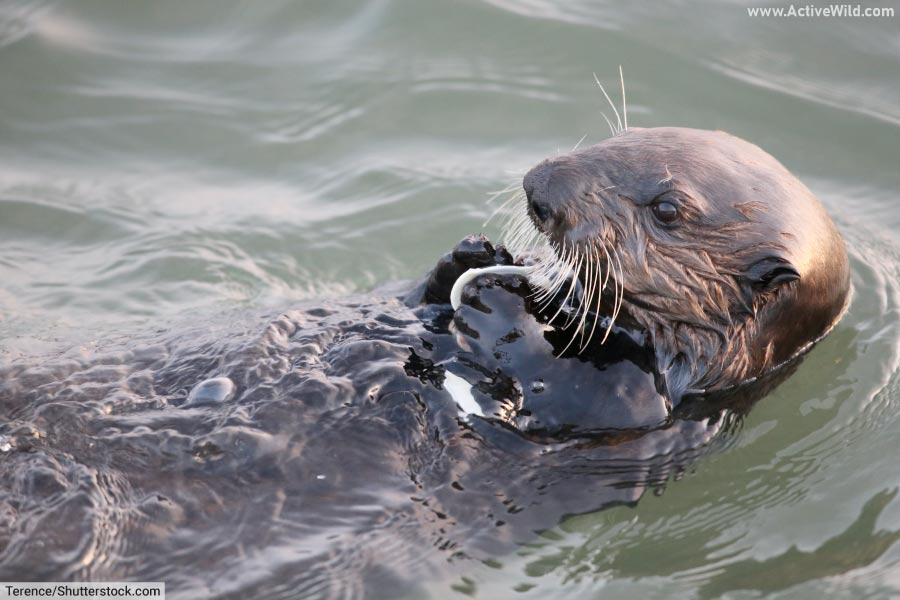
A kelp forest is an area of the ocean dominated by kelp. Kelp is a type of brown algae seaweed that grows on the seabed. Kelp forests are most abundant in temperate and polar regions.
Animals that live in kelp forests include: rockfish, sea snails, sea urchins, brittle stars, bristle worms, clams, mussels, seals and sea lions.
The sea otter is a keystone species in kelp forests, as it preys on sea urchins which graze on kelp.
(A keystone species is one that plays a vital part in maintaining an ecosystem.)
Coral Reefs

Coral reefs are undersea habitats formed by corals, colonial marine invertebrates related to jellyfish and sea anemones.
The calcium carbonate contained the skeletons of the individual corals that make up a colony gradually combines to form rock-like structures.
Coral reefs are known as the “rainforests of the ocean” due to the vast number of species they provide a home to; at least 25% of all marine species are thought to live in the coral reef habitat.
Animals that live on coral reefs include: invertebrates such as sponges, jellyfish, starfish, sea urchins and sea cucumbers and fish such as wrasses, triggerfish, and sharks. Outbreaks of the coral-eating crown-of-thorns starfish can be extremely damaging for coral reefs.
The Open Sea
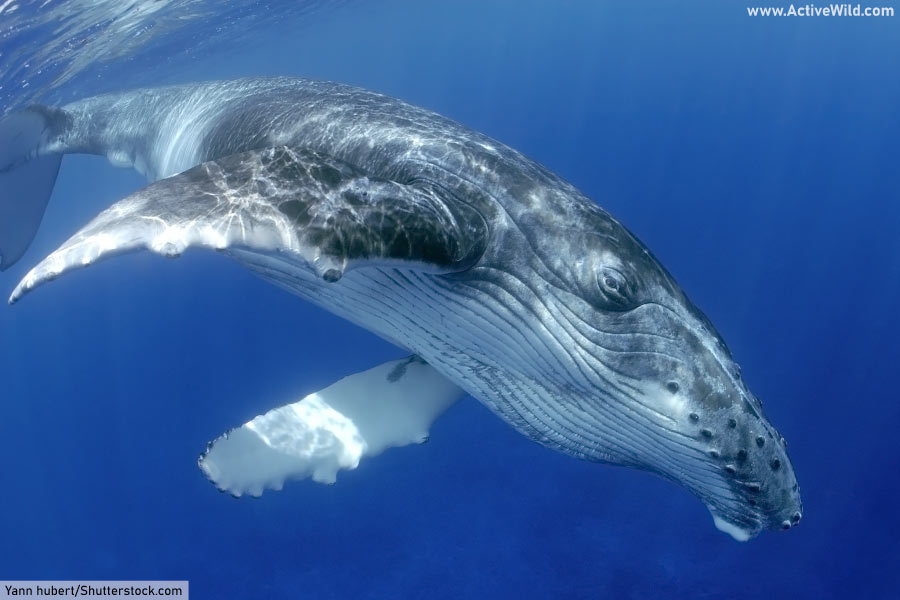
The open sea is the area beyond the shallow waters found around landmasses such as continents and islands and above the seabed. This area is also known as the “pelagic zone”.
The seabed is known as the “benthic zone”, while the area immediately above the benthic zone is the “demersal zone”.
Animals found in the open sea include: whales, dolphins, herrings, sardines, anchovies, tuna, sharks, sunfish and migrating sea turtles.
Hydrothermal Vents
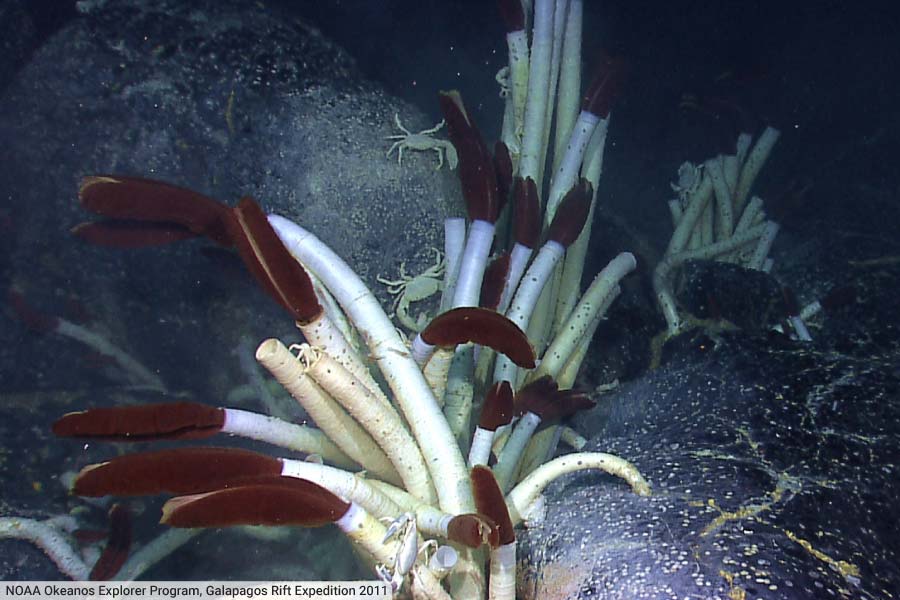
Hydrothermal vents, or submarine vents are cracks in the Earth’s crust on the sea bed caused by the movement of tectonic plates.
The magma beneath the plates heats the seawater that enters the vents, which can result in the water reaching a temperature of over 700° F (the water doesn’t boil due to the high pressure at these depths).
Chemicals emitted from the vents support bacteria and other microorganisms, which in turn provide nutrients for larger animals.
Animals that live on submarine vents include mollusks such as the scaly-foot gastropod (a deep-sea snail) and deep sea mussels of genus Bathymodiolus; worms such as the Pompeii worm and the 2 meter / 6.6 ft tall giant tube worm; and crustaceans such as the "Hoff crab", a yeti crab named after actor David Hasselhoff on account of its hairy chest!

